American target aircraft and air defense breakers based on decommissioned fighters
In the 1950s, the remote control system for unmanned aerial vehicles was developed so much that it allowed not only to take off and maneuver in flight, but to land after completing a flight mission.
In the first post-war decades, air targets were required to imitate as closely as possible the aircraft at the disposal of a potential enemy, to fly at transonic and supersonic speeds at medium and high altitudes. Transition tactical and deck aviation to operations at low altitudes led to the need to have targets capable of simulating fighter-bomber maneuvers at low altitude and performing bombing using vertical maneuvers.
To simulate air targets in industrially developed countries, special unmanned aerial vehicles were designed, and the practice of re-equipping frankly outdated or out-of-date combat aircraft has also become widespread.
American aerial targets based on jet fighters
The first American remotely controlled air target with a turbojet engine, the QF-80, was created by re-equipping the P-80 (F-80) Shooting Star fighter.
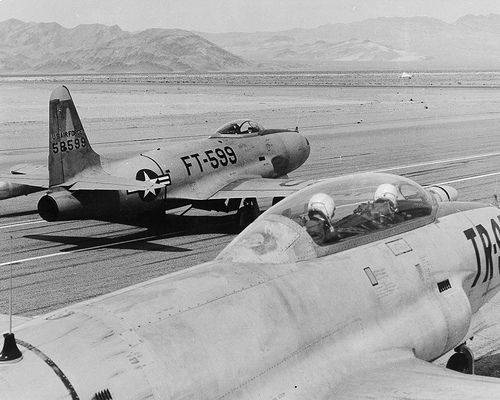
The unmanned QF-80 took off at the commands of the ground control station. In the air, the target was directed by the operator, who was in the cockpit of a DT-33 two-seat jet gunner (built on the basis of the T-33 TCB).
Later this practice became widespread. Many retired US Air Force jet fighters have been converted into radio-controlled targets.
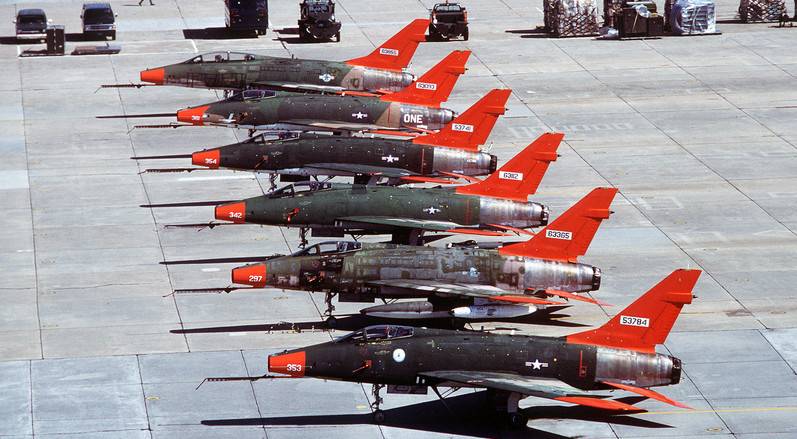
In trials of the new weapons, in the process of combat training of air defense missile systems and interceptor crews, radio-controlled ones were widely used: QF-86 Saber, QF-100 Super Saber, QF-9 Cougar, QF-8 Crusader, QT-33 Shooting Star, QF-102 / PQM-102 / QF- 106 Delta Dart.
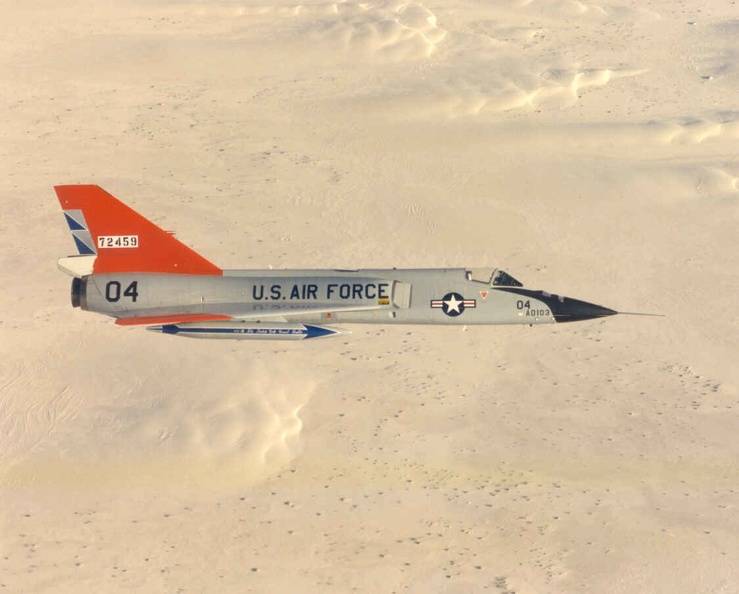
Usually, machines taken from long-term storage were converted into targets. Due to physical and moral obsolescence, these aircraft had no further prospects for their intended use, but at the same time they still possessed a certain reserve of the resource of the main units and the airframe.
During the Cold War, the most famous and numerous American fighter that was in service in the air force, in the US naval aviation, as well as supplied and manufactured under license in a number of allied countries, was the supersonic F-4 Phantom II.
Phantoms of various modifications were used as fighter-interceptors, fighter-bombers, radar hunters and reconnaissance aircraft. From 1958 to 1981, a total of 5 195 aircraft of this type were built.
In the 1980s, the American F-4 Phantom II began to be replaced by 4th generation fighters.
All naval squadrons providing air defense of aircraft carrier groups were re-equipped with F-1980A carrier-based interceptors by the mid-14s. In the attack deck squadrons, the F-4S were finally supplanted by the F / A-18A / B Hornet fighter-bombers in 1986.
Until 1992, fighter-bombers and reconnaissance aircraft were operated in the US ILC aviation. The Phantoms served in the US Air Force fighter wings until 1990.
The last war between 24 American "radar hunters" F-4G and 6 reconnaissance RF-4Cs was the anti-Iraqi operation "Desert Storm". The use of Phantoms was a forced step. At that time, the F-4G in the US Air Force did not have another specialized combat aircraft designed to suppress ground-based air defense. At the same time, the RF-4C was the only tactical reconnaissance aircraft equipped with high-resolution side-view cameras. Until 1996, Phantoms flew in the Air Force of the National Guard, which is the active reserve of the US Air Force.
In parallel with service in combat units, F-4 aircraft were used in various research programs. So, in the late 1960s, the F-4A fighter, taken out of service, accompanied the Kh-15 rocket plane at the initial stage of flight. Several times "Phantoms", accelerating to supersonic speed, filmed the launch vehicles launched from the Canaveral cosmodrome. In the first half of the 1980s, disarmed F-4Cs were used in the course of biomedical research, which clarified the effect of various kinds of overloads on the human body.
Like many others that have exhausted their resource or hopelessly outdated combat aircraft, the F-4s of early modifications were converted into radio-controlled targets. In the 1970s-1980s, Phantoms, thanks to their high flight speed, thrust-to-weight ratio and large practical ceiling, could imitate not only manned aircraft, but also cruise missiles.
Thanks to a real thermal and radar portrait, the use of fighters converted into radio-controlled targets makes it possible to increase the reliability of tests. In addition, the target based on "Phantom" made it possible to reliably assess the damaging factors of the warheads of various missiles during contact and distance detonation, since the F-4 fighters had a considerable margin of safety and good survivability, which was repeatedly confirmed in battle. The decommissioned Phantoms were used to test land and sea missiles, as well as new air-to-air missiles.
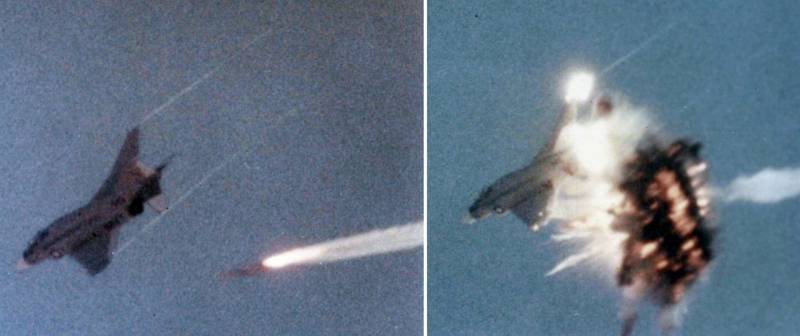
The Navy and Air Force independently transformed early F-4s into radio-controlled targets, but there was no single standard for aircraft conversion.
After the final decommissioning "Phantoms" of later modifications, which had a large flight resource and had further prospects of use, were too valuable to shoot them. The planes were handed over to the Allies or sent to storage at the Davis-Montan base, located near the city of Tucson in the state of Arizona. The dry climate and solid soil make it possible, after carrying out certain conservation measures, to store aircraft here in the open air.
After the collapse of the USSR and the decrease in the degree of international tension, the mothballed Phantoms were forgotten for some time. The American Air Force, Navy and ILC were more than enough of the already built 4th generation fighters, and the "natural" decline in the course of aviation accidents and due to resource depletion was covered by previously concluded contracts.
Using decommissioned "Phantoms" as target aircraft and air defense breakers
The F-4 planes stored in the "graveyard of bones" were remembered after the US Air Force began to run out of unmanned targets QT-33 and QF-106 - converted from training aircraft and supersonic fighter-interceptors.
By the beginning of the XNUMXst century, in the allied countries, where there were "Phantoms", they began to be replaced with modern combat aircraft, and it became clear that there were no prospects of returning obsolete fighters, but still quite suitable for further use, to service, and it was pointless to keep them further. ...
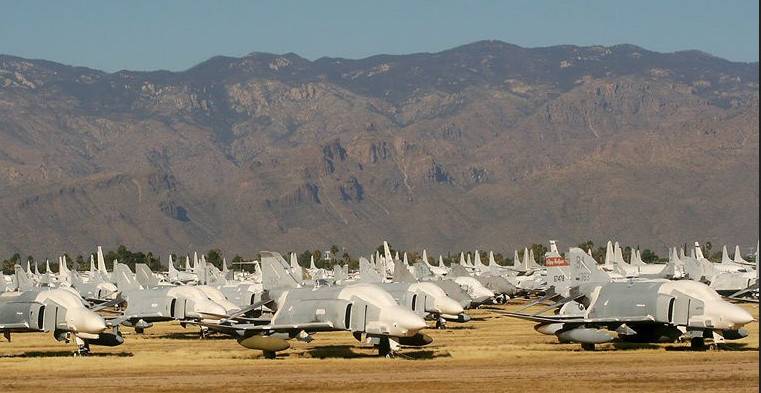
In 2005, there were about 500 Phantoms of various modifications under conservation. IN Drones decided to remake the most recent F-4E fighter-bombers, F-4G "air defense fighters" and RF-4C reconnaissance aircraft. Early modifications, F-4D fighter-bombers and F-4S carrier-based interceptors were used as a source of spare parts.
As part of the FSAT (Full-Scale Aerial Target) program initiated by the Combat Aviation Command, the personnel of the 309th Aerospace Maintenance and Regeneration Group (AMARG) in Davis-Montan brought aircraft to flight condition.
In the process of converting into targets from aircraft, part of the equipment unnecessary for unmanned flight was dismantled: an airborne radar, a 20-mm cannon, navigation equipment of the TACAN system and fuel receivers for refueling in the air. The wing consoles and tail of the target aircraft were painted red to facilitate their visual identification.
In the course of measures to re-equip "Phantoms" in a target, the American system for storing and restoring combat aircraft put into reserve has once again confirmed its effectiveness.
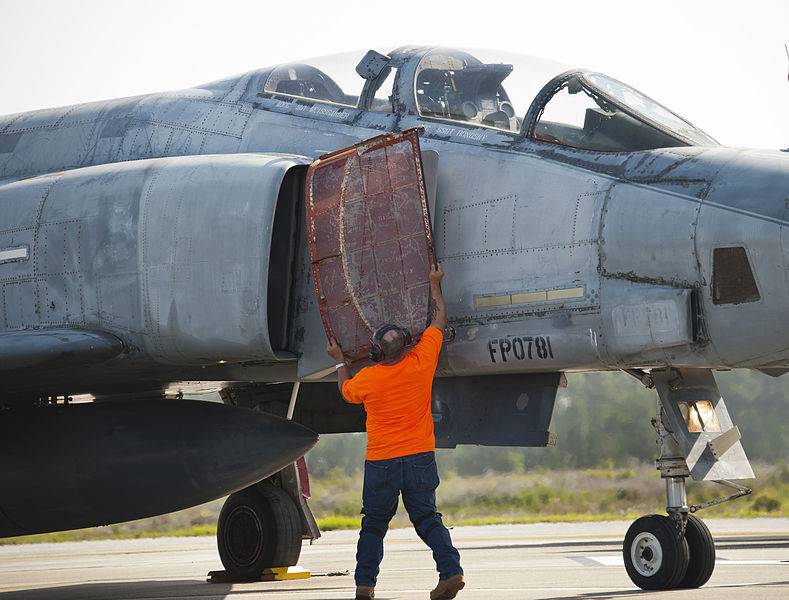
It was possible to return to flying condition about 350 aircraft, produced in the 1960-1970s and stored at the base in Arizona for more than 20 years.
The contract for the alteration of the reactivated Phantoms in the target was won by the American branch of the British corporation BAE Systems - BAE Systems North America.
From the Davis-Montan airbase, the planes were ferried to the Mojave airfield in California, where a set of digital remote control equipment was installed on them.
The Mojave airfield is a very interesting object.
Due to the fact that this is the first American airfield licensed in the United States for horizontal launches of reusable spacecraft, there are facilities of private companies that implement space programs.
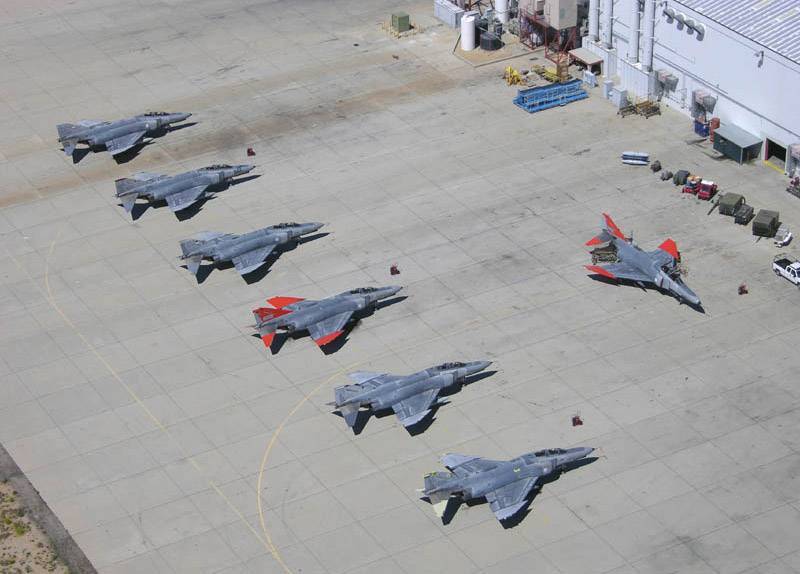
In the same hangars, where, until recently, the Phantoms were refurbished, refurbishment and refurbishment were carried out in accordance with American airworthiness standards for the MiG-29 and Su-27 fighters received from Eastern Europe and the CIS.
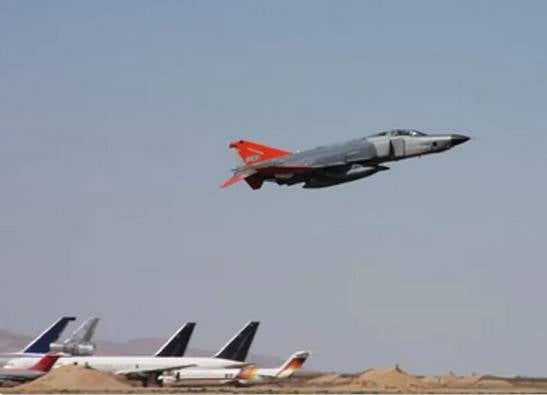
In the northeastern part of the airfield, there is a site where dozens of civil aircraft that were previously operated by American airlines are stored. These planes are waiting for their turn there for restoration. After refurbishment and painting, they fly to third world countries. Quite a few transport and passenger aircraft taken from storage in the "Mojave" ply the airspace over the former USSR.
Thanks to the installation of the computerized remote control equipment Gulf Range Drone Control (GRDCS), the unmanned Phantom was able to perform rather complex maneuvers that were previously inaccessible to other radio-controlled targets. Takeoff, landing and changing the course and altitude on the route in unmanned mode can be carried out both within the framework of remote control and according to a predetermined program. The aircraft is equipped with a transponder and a satellite navigation system with data transmission to a ground or air control center.
It is reported that during the conversion of F-4 aircraft into unmanned vehicles, specialists from BAE Systems North America are installing an automatic threat recognition system, which makes it possible to get as close as possible to the combat situation during control and training firing. Suspended equipment with optoelectronic and radar sensors, detecting an approaching missile or radar radiation, automatically selects the optimal countermeasures from those available on board the aircraft, and develops an evasion maneuver.
On QF-4 aircraft, in parallel with the installation of digital remote control equipment, the possibility of a manned flight is retained, which allows for safe ferrying over long distances and expands the scope of application. In particular, manned QF-4s are capable of more active maneuvering than unmanned aircraft, and conduct a training air battle with fighters in service. Regular manned aircraft do not have red-colored wingtips.
For manned flight, the least worn out converted F-4G Wild Weasel, built in the late 1970s, are used. Since 2005, these aircraft, in addition to "combat" service, regularly took part in various air shows in the United States.
Manned "Phantoms" save the resource of combat aircraft by testing radar systems, training air defense crews and interceptor pilots, without using weapons. As of 2012, 4 Air Force pilots and 6 contract retirees were allowed to fly the QF-10. They are all highly experienced pilots who have flown an F-4 Phantom II for at least 1 hours in the past.
After overflight and control tests, the remotely controlled QF-4 aircraft are transferred to the 82nd Unmanned Target Squadron (82 ATRS), based at Holloman AFB in New Mexico, and to the 53rd Weapon Assessment and Test Group (53 WEG ) at Tyndall Air Force Base in Florida.
In the past, the Tyndall airbase also underwent evaluation tests of the MiG-23 and MiG-29 fighters received from the countries of Eastern Europe.
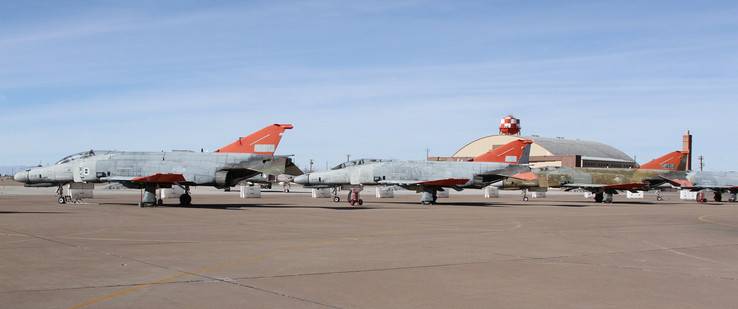
The Phantoms were maintained and operated in different ways. At Tyndall AFB, where QF-4s mostly flew unmanned and often “one-way”, less attention was paid to maintaining the entire fleet of targets in flight condition. Specific aircraft were prepared for the flight, often borrowing the necessary parts and components from other aircraft. At the same time, the current repair and maintenance of the QF-4 was carried out mainly by military personnel.
In the 82nd Squadron of unmanned targets, the QF-4 was treated more carefully. At the Holloman airbase, contract retirees, who were just as elderly as the planes, were involved in servicing the Phantoms.
Here, more attention was paid to maintaining the aircraft in flight condition on which manned flights were carried out. At the same time, the smaller (compared to Tyndall airbase) fleet of "red-winged" targets had a higher percentage of aircraft ready for flight.
At Holloman and Tyndall Airbases, various systems are used to control the flight of unmanned aerial vehicles converted from retired fighters.
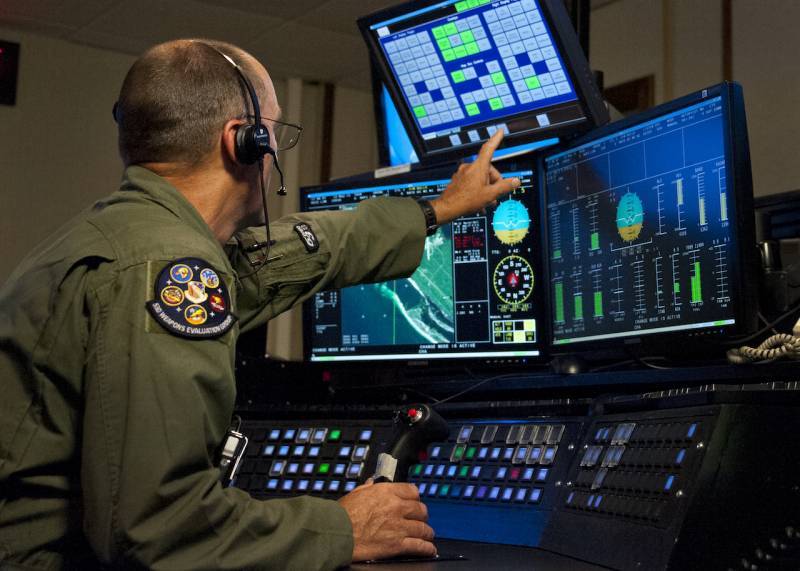
Above the Holloman base area, the QF-4 unmanned aerial vehicles are controlled using the GRDC ground system, and two specially converted E-9A aircraft are used when flying in Florida and other parts of the United States. These aircraft were created by Boeing on the basis of the civilian DHC-8 Dash 8 DeHavilland Canada turboprop airliner.
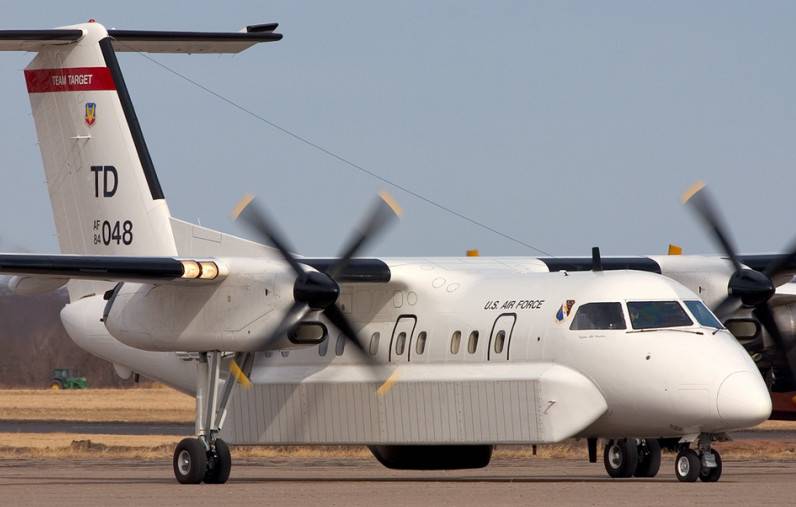
The E-9A has two radars: a side-looking radar on the right side of the fuselage and a search one at the bottom. There is also equipment for remote control of targets and removal of telemetry from tested missiles. During the flight, E-9A operators, using on-board radars, are capable of observing the air situation at a distance of several hundred kilometers and controlling the flight of the target aircraft.
Armed modification of the unmanned aircraft QF-4
In addition to testing air defense systems and radars in manned mode and use as unmanned targets, another application was found for the QF-4.
In January 2008, an AGM-88 HARM anti-radar missile launched from an unmanned aircraft, equipped with a warhead, first hit a high-frequency radiation source at the Nellis training ground.
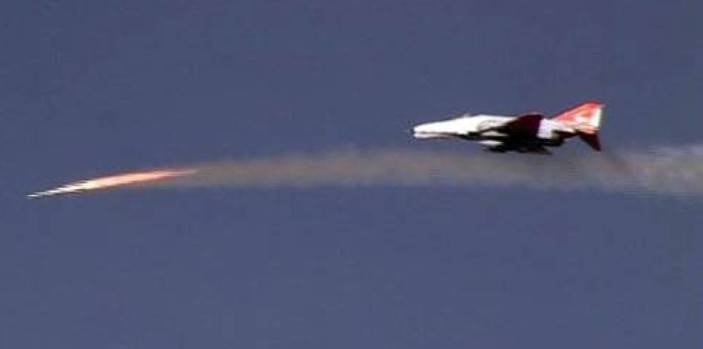
Foreign sources say that unmanned Phantoms can carry JDAM guided bombs with caliber from 230 kg (500 lb - GBU-38) to 910 kg (2 lb - GBU-000). In this case, it is possible to destroy stationary objects with previously known coordinates. Bombs, equipped with a JDAM kit, are directed to the target with an integrated inertial guidance system paired with a GPS receiver, providing a range of up to 31 km from the drop point. The value of the KVO demonstrated during the tests is 28 meters.
Thus, jet fighters converted into drones demonstrate the ability to suppress enemy air defenses. It is assumed that unmanned aircraft equipped with PRR, corrected bombs and means of electronic reconnaissance, moving in the first wave, are able to take on the main strike of anti-aircraft missiles, identify and partially destroy the unmasked positions of the radar and air defense systems. This, in turn, will significantly reduce the losses among pilots during operations to suppress enemy air defense systems.
The decline of the QF-4 target aircraft career
Currently, approximately 60 F-4s remain at the Davis-Monthan storage base. But these are already unsuitable for restoration aircraft, they will no longer rise into the air and are subject to disposal. In this regard, it was announced that the Air Force will no longer order the conversion of F-4 fighters into remotely controlled drones.
The largest number of usable QF-4 aircraft in the US Air Force was in 2011-2012, reaching approximately 200 units. They were used very intensively. Every year, with the participation of remotely controlled targets, several dozen firing sessions took place at the ranges.
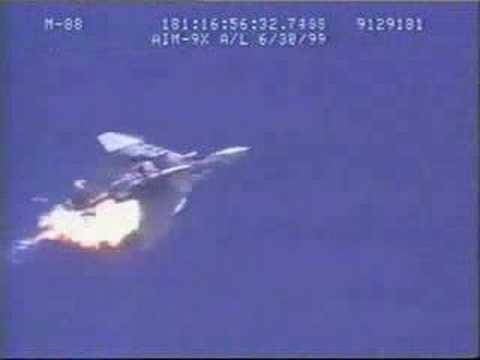
In Florida, over the waters of the Gulf of Mexico, test launches of new modifications of AIM-4X Sidewinder and AIM-9 AMRAAM air-to-air missiles were conducted on unmanned QF-120 targets, and at the White Sands proving ground in New Mexico, Lockheed Martin Corporation tested Phantomah "modernized missiles for the Patriot Advanced Capability (PAC-3) air defense system. In 2013, during the tests of medium-range air defense systems MEADS (Medium Extended Air Defense System) at the White Sands missile range, QF-4 and OTR Lance, flying at supersonic speed from different directions, were almost simultaneously destroyed.
But this does not mean that every test with live fire ends with the loss of a target. Thanks to the BAE Systems Common Missile installed on the Phantoms, they often managed to evade missiles with a radar guidance system in 10-20% of launches, and from the AIM-9X Sidewinder with the massive use of heat traps in 25-30% of cases. As a rule, during the tests, missiles with an inert warhead were used, and the destruction of the QF-4 target occurred only with a direct hit. But even in this case, the damaged Phantoms sometimes managed to return to their airfield, where they were repaired and returned to service.
At the end of 2016, the last manned flight of the Phantom took place at the Holloman airbase, after which all available QF-4s were used only in an unmanned version.
Taking into account that the average annual loss of Phantoms during missile test firing was 10-15 targets in Tyndall and 4-5 in Holloman, as of today, there are no flying Phantoms in the US Air Force. left.
It is known that as of 2021, the 13 surviving QF-4s in the US Air Force are no longer in service. Control and navigation equipment, electronic threat assessment and jamming systems, valuable components and assemblies were dismantled from these aircraft, technical fluids and fuel were drained from the tanks. After that, the Phantoms were towed to a training ground in the vicinity of the Holloman airbase, where they serve as ground targets for practicing cannon firing and bombing at ground targets.
Replacement of QF-4 Phantom II with QF-16 Fighting Falcon target aircraft
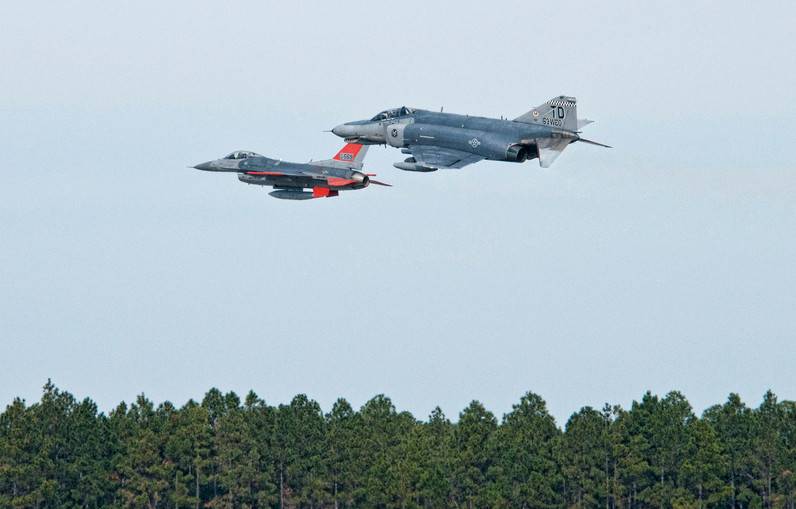
In 2012, it became clear that the F-4 Phantom II aircraft suitable for conversion into targets were running out, and the US Air Force command initiated the creation of drones based on early F-16 Fighting Falcon fighters.
According to senior American officers responsible for combat training, a remotely controlled target, created on the basis of a 4th generation fighter, due to its higher maneuverability and better acceleration characteristics, more realistically simulates modern air targets and allows you to raise the skill level of fighter pilots and air defense missile systems ...
On November 19, 2012, the first QF-16 arrived at Tyndall Air Force Base for testing. As in the case of the QF-4, the aircraft was taken from storage at Davis-Montan and restored by specialists from the 309th Aerospace Maintenance and Repair Group.
At the first stage, lightweight QF-16s, with dismantled weapons and radar, were used in a manned version, simulating air targets in missions without the use of real weapons.
The competition for the conversion of 126 F-16A / C / D fighters into drones (worth $ 69,7 million) was won by Boeing. In the future, several more contracts were concluded. According to forecasts of American aviation experts, the number of F-16 fighters convertible into targets and unmanned carriers may exceed 300 units. An indicative fact is that the F-16A fighters have the greatest residual resource, which had a minimum flight time and were quickly supplanted in the combat units by later modifications.
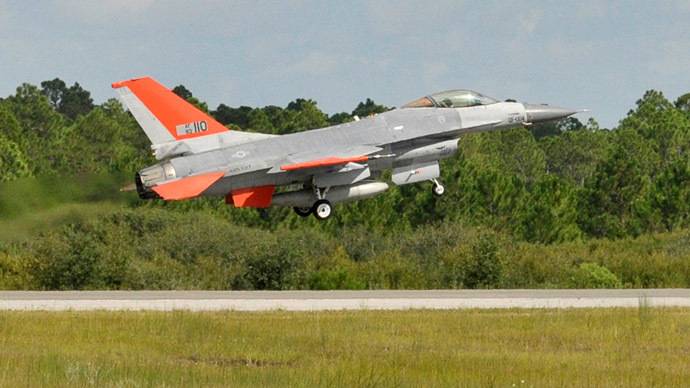
As part of the contract, the QF-16 is equipped with a data line for the GRDCS (Gulf Range Drone Control System) control equipment, VAS visual augmentation systems, CTS command telemetry and PCS payload control. For jamming on the external nodes of the suspension can be placed containers with equipment AN / ALQ-188 and AN / ALQ-167.
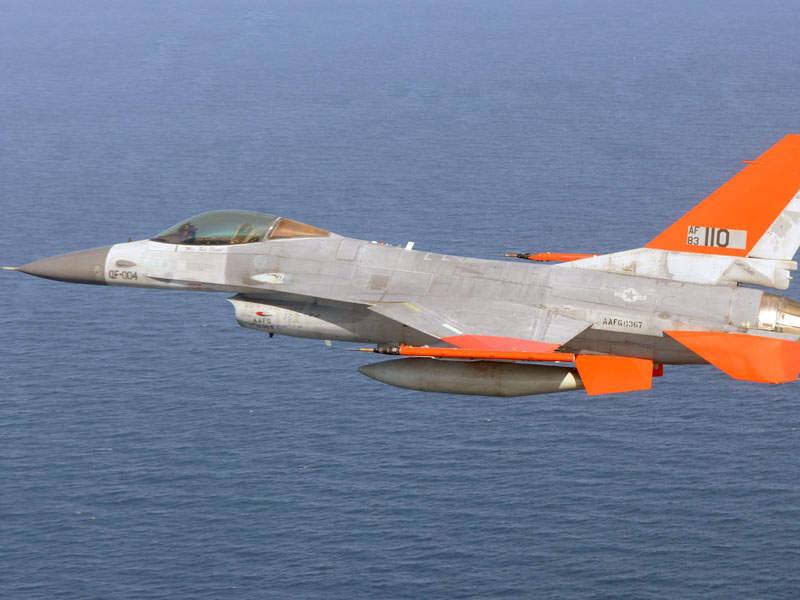
In September 2015, QF-16 of 82nd Target Squadron made its first unmanned flight, taking off from the runway at Tyndall Air Force Base in Florida. As in the case of the QF-4, the external identifying features of the QF-16 target aircraft are the red-painted wing parts and the tail unit.
Mass deliveries of unmanned QF-16s began at the end of 2015, after which it was decided to abandon the QF-4. For some time, the QF-4 and QF-16 aircraft, consisting of 82 ATRS and 53 WEG, were operated in parallel.
Currently, the US Air Force can have more than a hundred remotely controlled QF-16s, which are mainly used as unmanned targets in the process of combat training and in the course of testing new types of weapons. But if necessary, these unmanned aircraft can also carry weapons and participate in the breakthrough of the enemy's air defense system.
The history and prospects of the use of remotely controlled combat aircraft converted from decommissioned fighters in our country
In the USSR, decommissioned combat aircraft began to be used as radio-controlled targets almost simultaneously with the United States.
In Soviet times, target aircraft based on jet fighters were widely used. In most cases, the re-equipment was carried out at aircraft repair plants.
In particular, the Lviv ARZ has been engaged in alteration of the MiG-15, MiG-17, MiG-21 fighters in the M-15, M-17 and M-21 targets for a long time. Such aircraft were also refitted at the aircraft plant in Tbilisi. The Kazan experimental design bureau "Sokol" transformed the MiG-17 and MiG-19 fighters, as well as the L-29 trainer into targets M-17, M-19 and M-29. In the Yak-25MSh target, the Yak-25M two-seat interceptors were also converted.
To control the target aircraft, mobile ground command posts were used, as well as air command posts based on two-seat aircraft: UTI MiG-15, L-39 and MiG-23UB.
The most advanced air targets M-21 (M-21M) were produced on the basis of the MiG-21. Initially, the MiG-21PF and MiG-21PFM front-line interceptors were used for this. Later, the "twenty-first" subsequent modifications went into action.
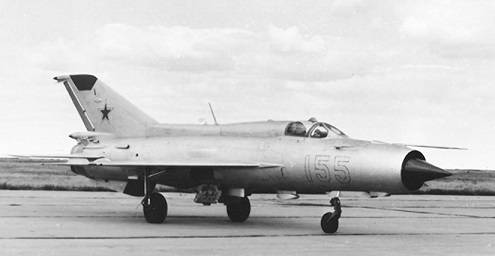
During the conversion to a target, a radar sight, a weapon control system and one fuselage fuel tank were removed from the MiG-21PF / PFM. Instead, they installed an automatic control system with an autopilot, active and passive jamming equipment, including a cassette with IR traps, and equipment for recording the magnitude of a miss and a projectile hit. In addition, a tracer was available for external trajectory measurements. The maximum flight speed of the M-21 (M-21M) was 1 km / h. Service ceiling - 800 14 m. Flight duration - 400 minutes.
Currently, target aircraft based on the MiG-21 are not used and have survived only in museum exhibitions.
After Russia gained "independence", the production of radio-controlled targets, created on the basis of combat aircraft that had exhausted their service life, ceased, although there were all the conditions for this.
In the 1990s – 2000s, the RF Ministry of Defense “utilized” a very significant number of “outdated” interceptors, front-line fighters, fighter-bombers and reconnaissance aircraft.
About 2 combat aircraft were scrapped. These were not only the hopelessly outdated MiG-000, Su-21, Su-7 and Yak-15, but also quite capable Su-28, MiG-17, MiG-23 and MiG-25. "Effective" managers of the RF Ministry of Defense during the "Serdyukovshchyna" era turned aviation equipment storage bases into recycling centers.
In the Lipetsk center for combat use and retraining of flight personnel alone, over a hundred MiG-2008 and MiG-2011 fighters and fighter-bombers were destroyed in the period from 23 to 27.
Sadly, this practice continues to this day.
At present, MiG-31 interceptors are being cut into metal at a military airfield in Lipetsk.
Looking at these satellite images, one involuntarily compares the attitude towards obsolete and exhausted aircraft in the United States and China, where decommissioned fighters are massively converted into drones. Even Vietnam bypassed Russia, which had risen from its knees, in this respect.
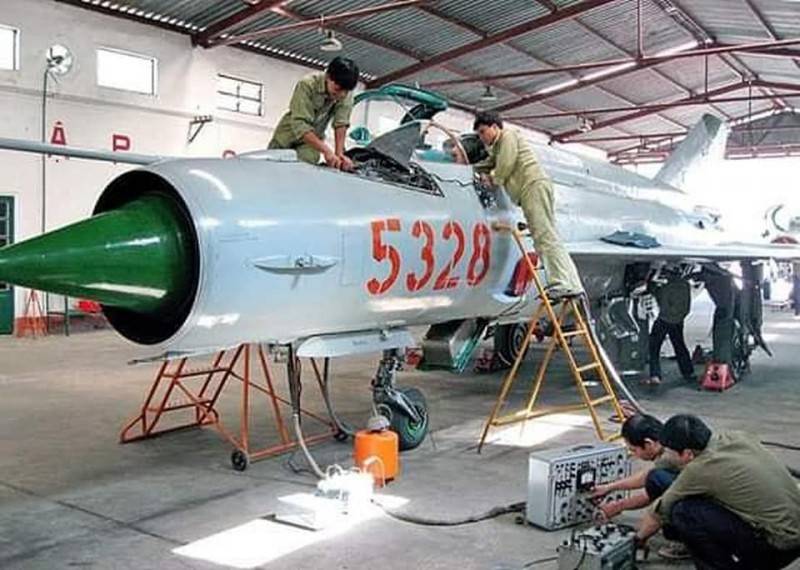
In 2020, information appeared that the General Directorate of the Defense Industry under the Ministry of Defense of the Socialist Republic of Vietnam, together with the state-owned company Viettel Military Telecommunications Group, began work on the conversion of 35 MiG-21bis and 15 MiG-21UM fighters into UAVs. It is reported that unmanned MiG-21s will be used as targets in air defense exercises and as shock drones.
The most promising in terms of converting into remotely piloted vehicles in the RF Aerospace Forces are front-line fighters MiG-29 and interceptors MiG-31. Unfortunately, due to storage in the open air, most of the MiG-29 due to corrosion is not suitable for further operation, although the gliders of far from all aircraft have exhausted their service life.
According to information available in open and publicly available sources, in the Russian Aerospace Forces and in the Naval Aviation in 2020, there were approximately 130 MiG-29 fighters of various modifications in flight condition, and about one and a half hundred aircraft were in storage in varying degrees of safety.
According to the same sources, there are about 31 modernized MiG-90 interceptors in service. In experimental combat operation there are also 10 MiG-31K - carriers of the Dagger hypersonic missile. In the near future, about 150 MiG-31s are to be decommissioned, the modernization of which is recognized as inexpedient.
Surely, among the approximately 300 MiG-29 and MiG-31 unsuitable for further service, it is realistic to select several dozen aircraft that can be converted into supersonic drones suitable for use as targets and reconnaissance and strike drones. At the same time, references to the lack of funding are untenable.
Our country, despite aggravated relations with the United States, continues to buy dollars and keep funds in American securities. Assistance in creating a modern control system and the supply of electronic components for its local production on the territory of Russia could be provided by our eastern "strategic partner", which in recent years has switched from the massive purchases of Russian weapons and military equipment to the acquisition of single samples for the purpose of acquaintance.
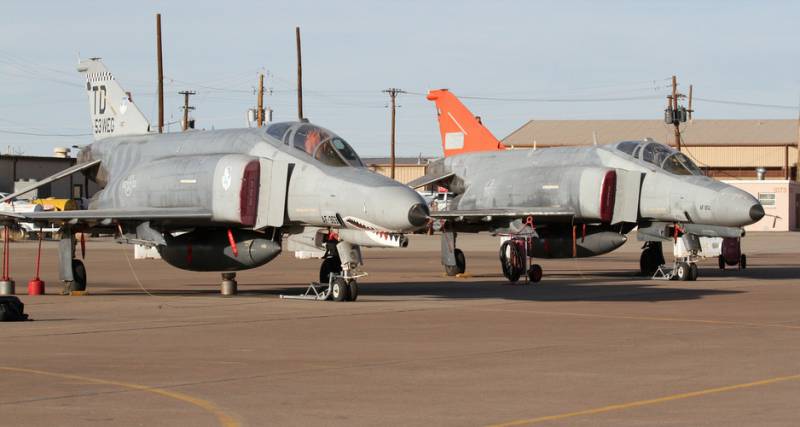

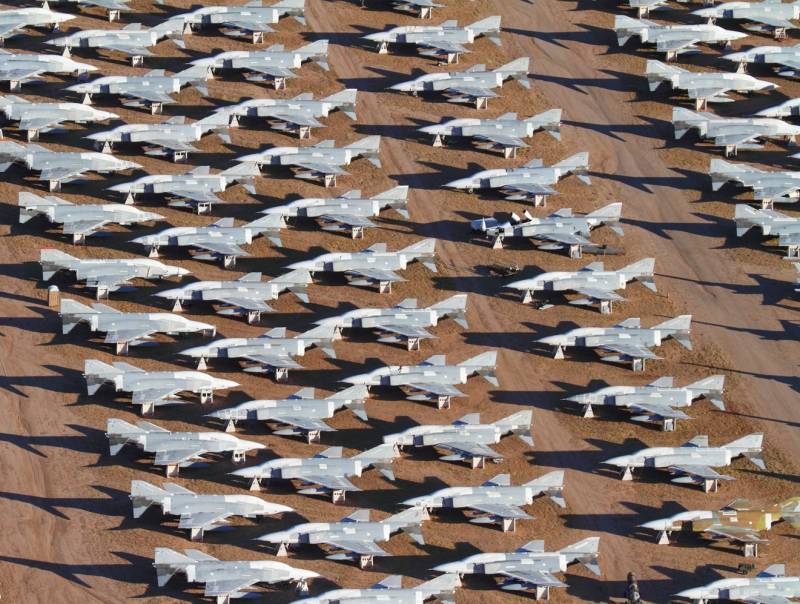

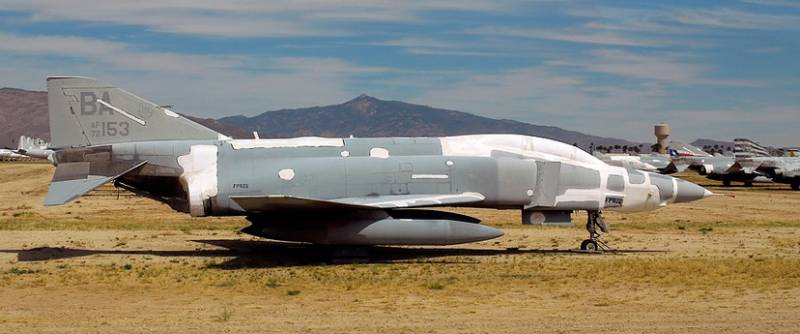

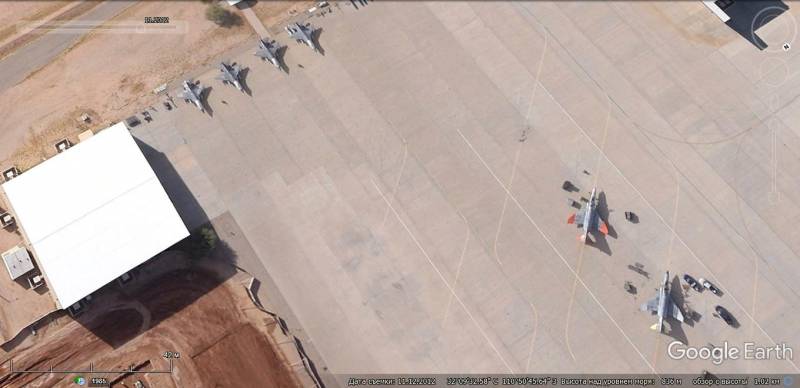
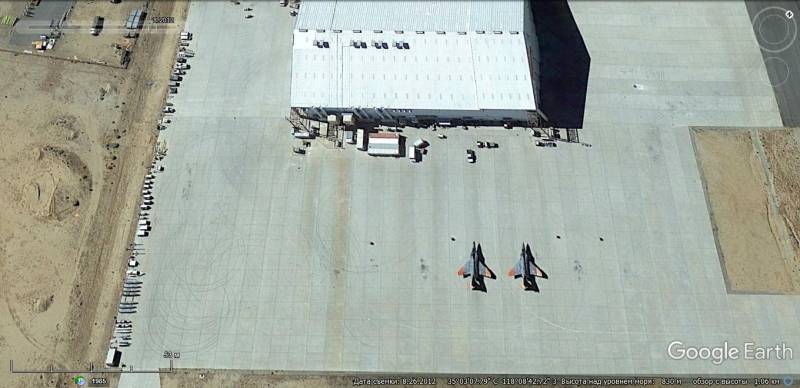
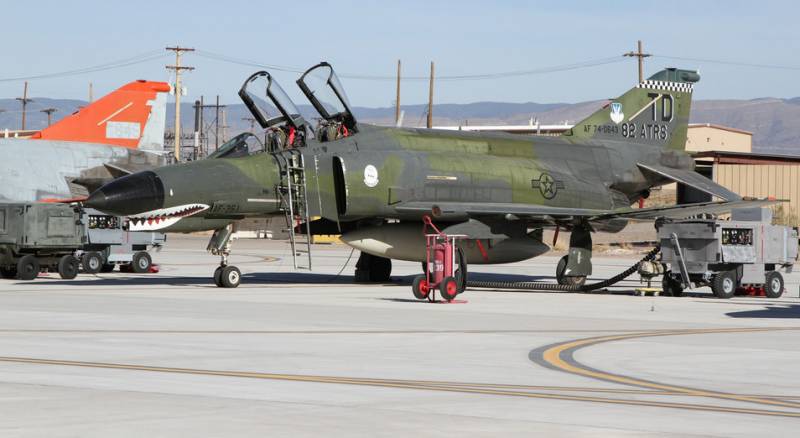
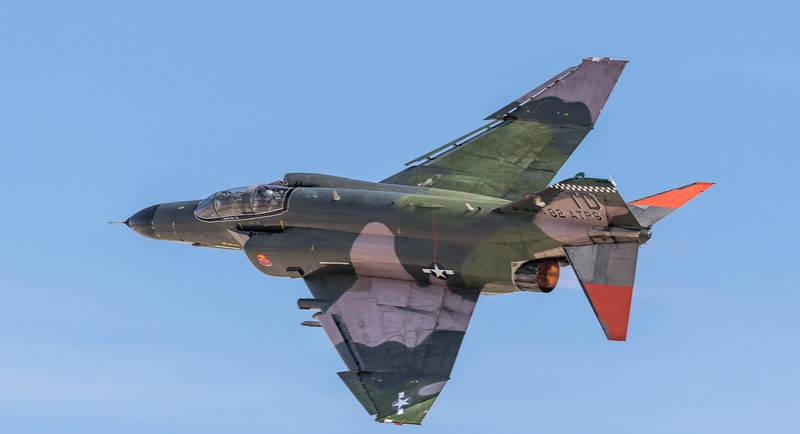
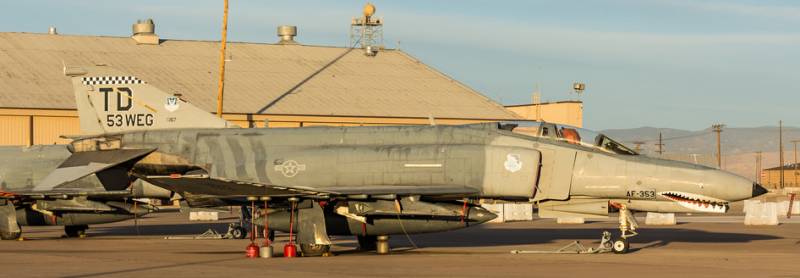
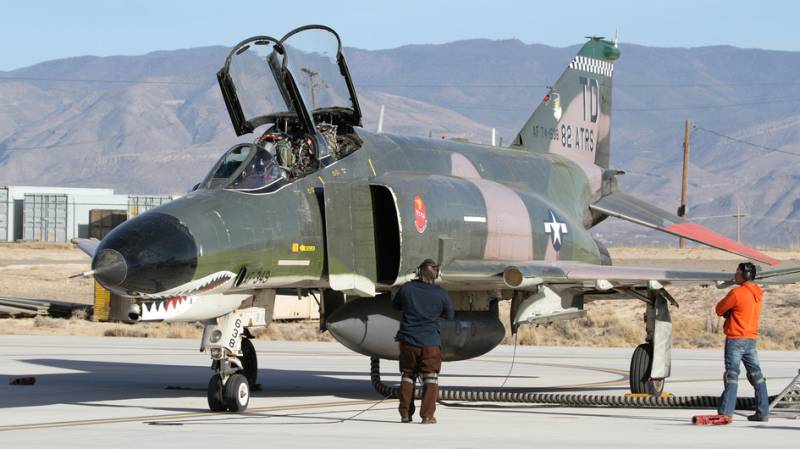
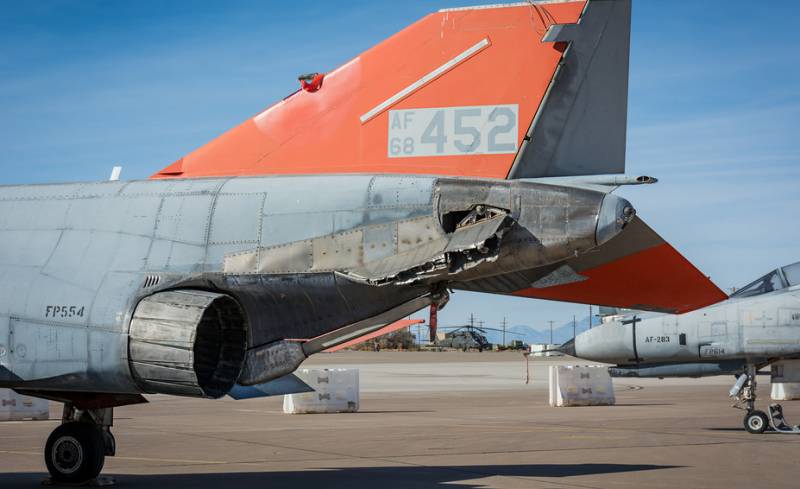
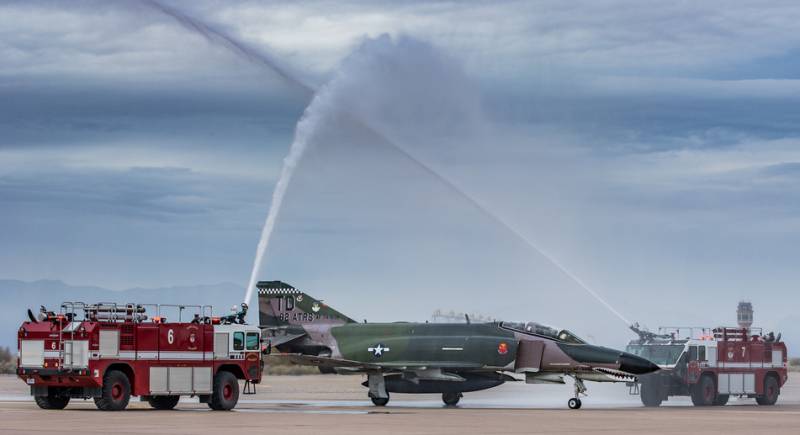
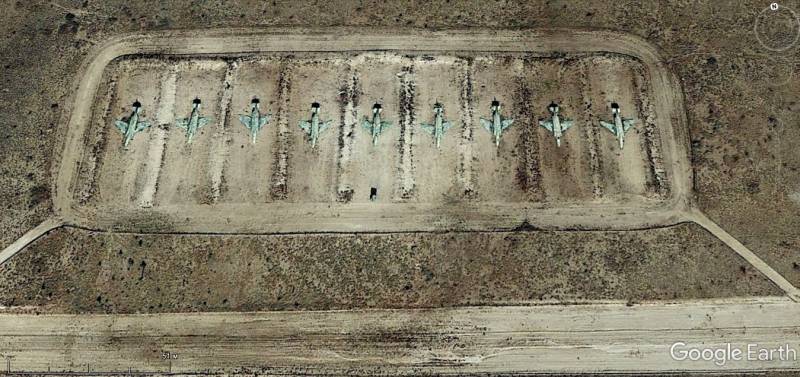
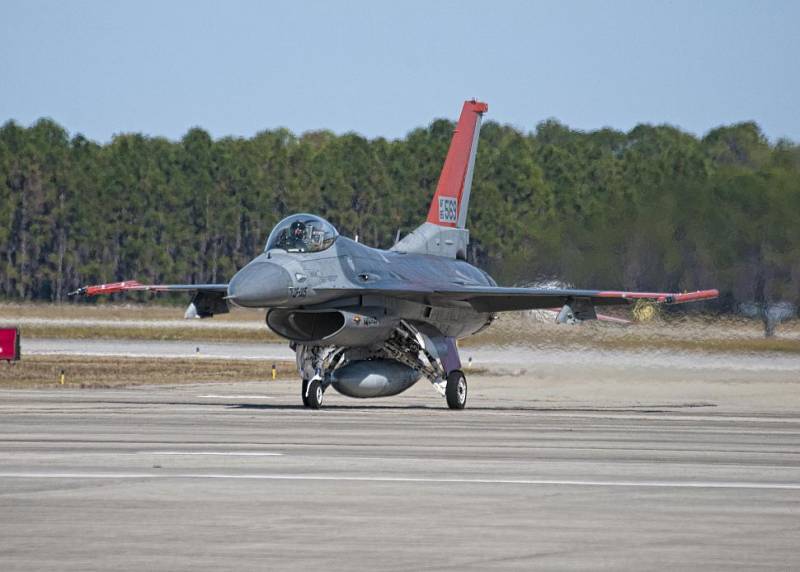
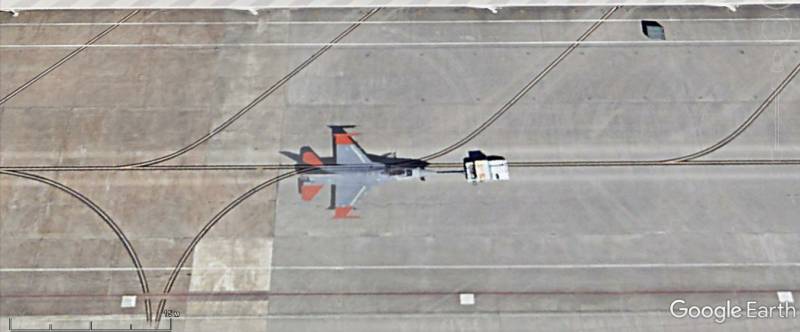
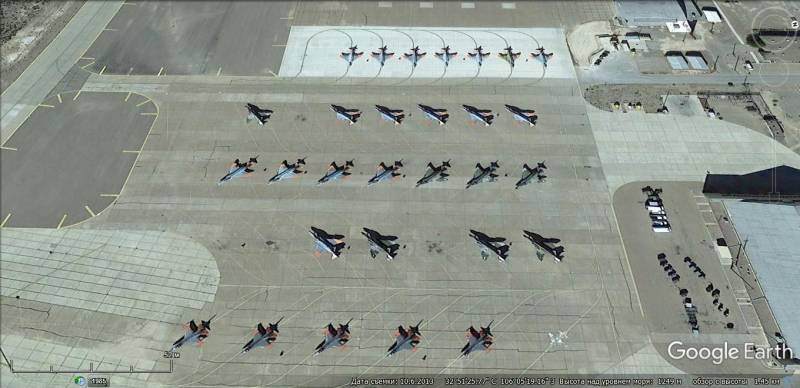
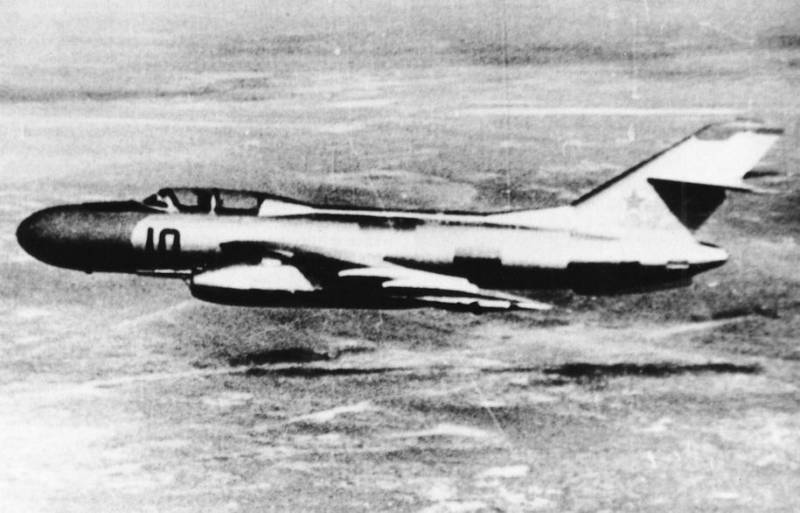
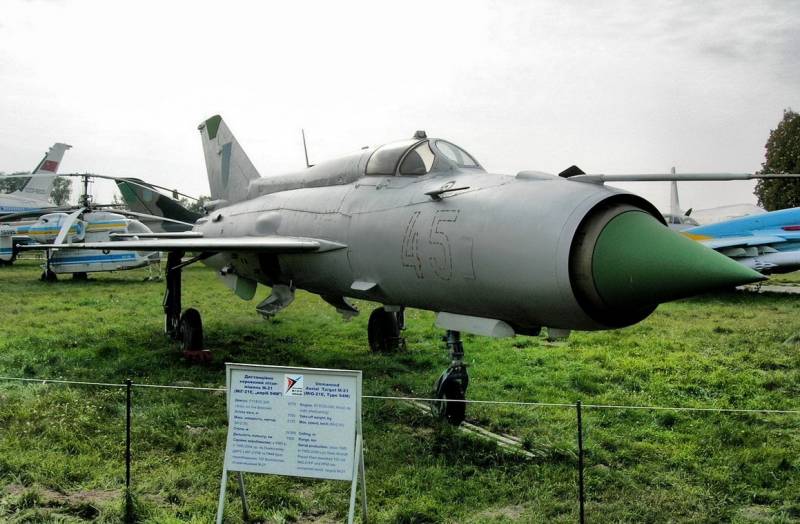
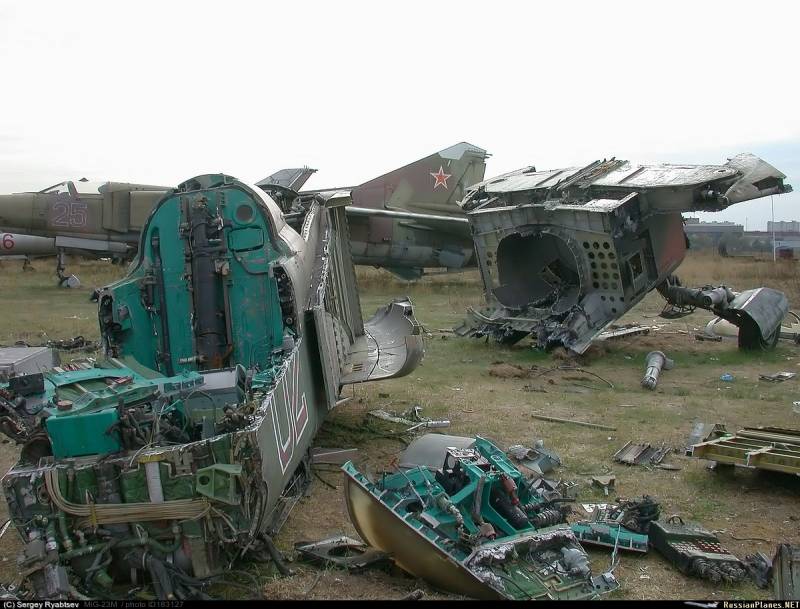
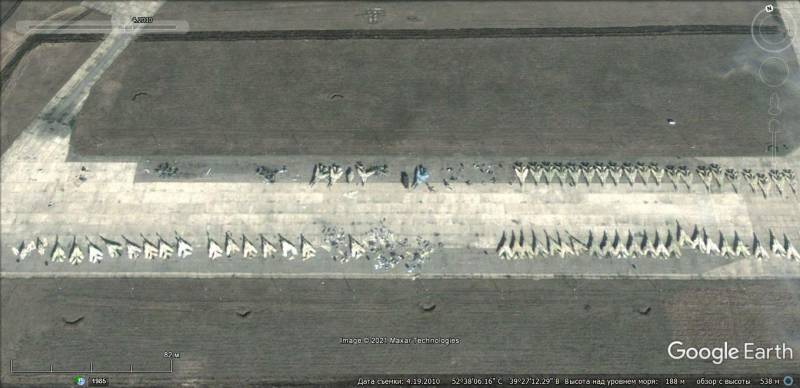
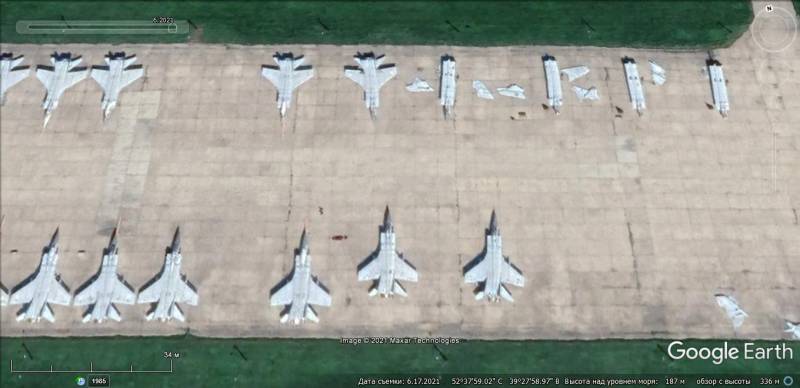
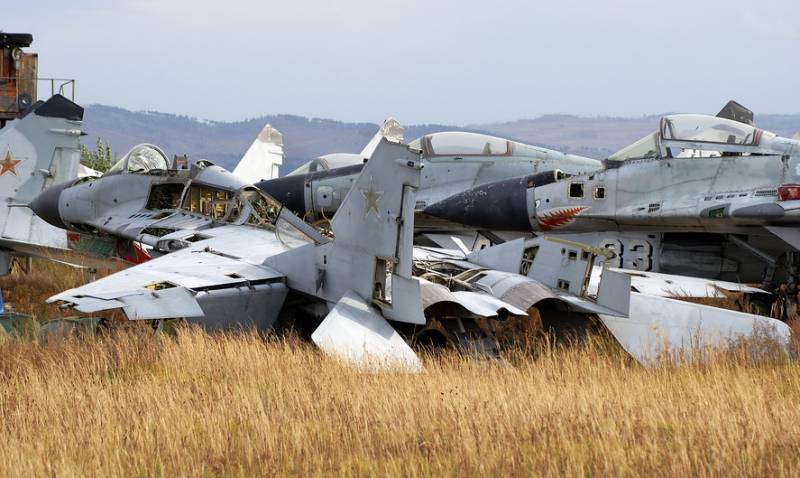
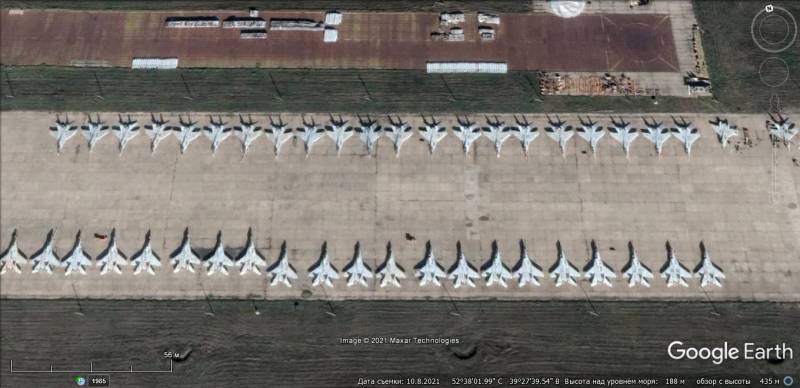
Information